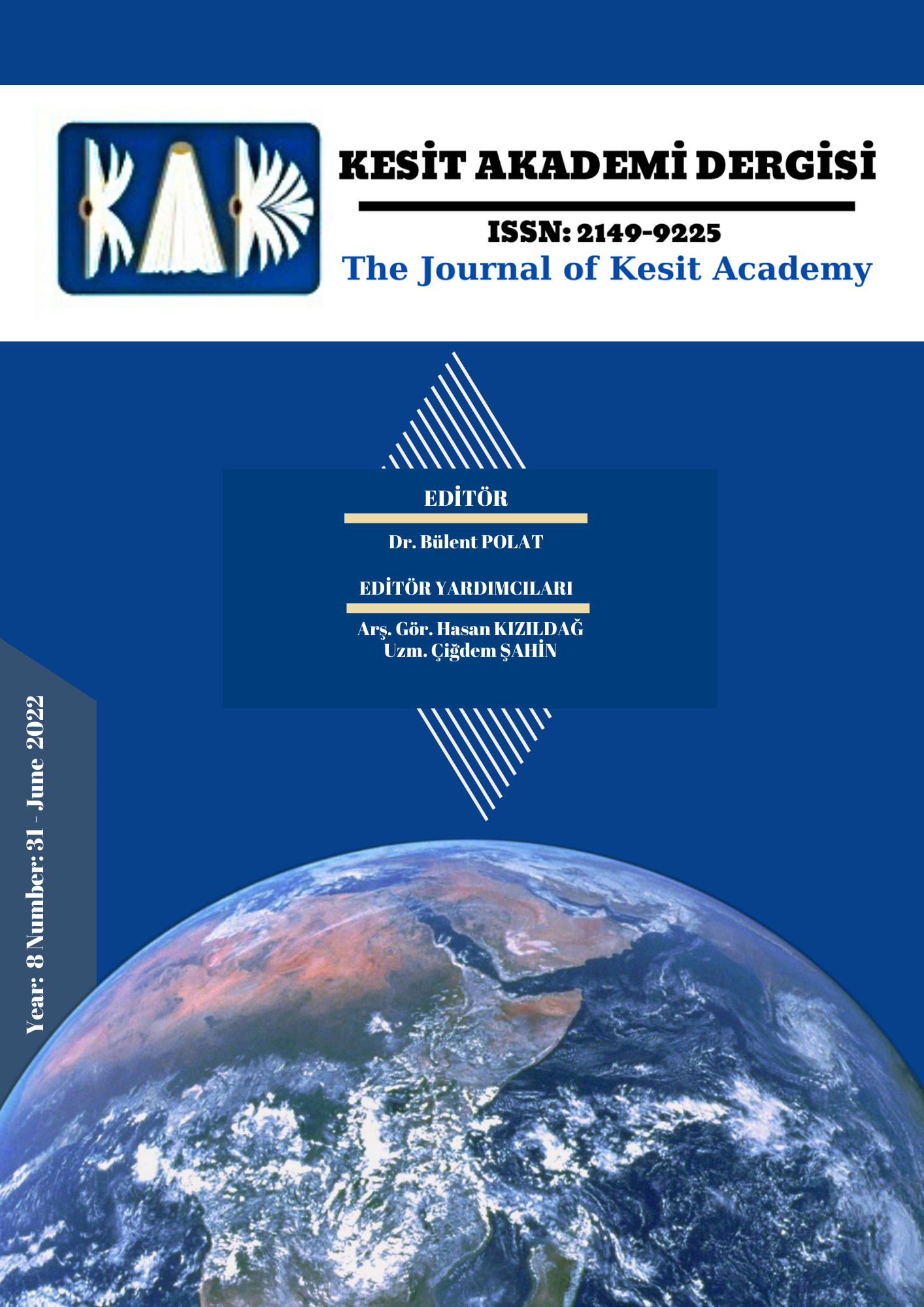Ortaokul Öğrencilerinin Medya Okuryazarlık Düzeylerini Etkileyen Faktörlerin Öğrenci Görüşlerine Göre İncelenmesi
Author :
Abstract
Bu araştırmanın temel amacı, ortaokul öğrencilerinin medya okuryazarlık düzeylerini etkileyen faktörleri belirlemektir. Araştırmanın çalışma grubunu ortaokul 7. sınıf 22 öğrenci ve 8. sınıf 18 öğrenci olmak üzere toplam 40 öğrenci oluşturmaktadır. Araştırmada nitel araştırma yöntemlerinden durum çalışması deseni kullanılmıştır. Araştırmada veri toplama aracı olarak araştırmacılar tarafından geliştirilen yarı yapılandırılmış görüşme formu kullanılmıştır. Elde edilen verilerin çözümlenmesinde ise betimsel analiz yöntemi uygulanmıştır. Araştırma sonucunda elde edilen veriler incelendiğinde; öğrencilerin en güvendiği medya aracının televizyon olduğu, öğrencilere göre medyanın gerçekleri yansıtmadığı, öğrencilerin medyada günlük 1 ile 5 saat arasında zaman geçirdiği, medya okuryazarlığı dersinin öğrencileri medya hakkında olumlu yönde etkilediği ve öğrencilerin ailelerinin sosyal medyada zaman geçirmelerine olumsuz yönde etki etmediği bulgularına ulaşılmıştır. Öğrenciler, medya okuryazarlığı dersi ile ilgili önerilerde bulunmuşlardır.
Keywords
Abstract
The primary purpose of this research is to determine the factors affecting the media literacy levels of secondary school students. The study group of the research consists of 40 secondary school students, 22 7th grade and 18 8th grade students. The case study design, one of the qualitative research methods was used in the research. In the study, a semi-structured interview form developed by the researchers was used as the data collection tool. In the analysis of the obtained data, the descriptive analysis method was applied. When the data obtained as a result of the research is analyzed; It has been reached that the most trusted media tool by the students is television, the media does not reflect the facts according to the students, they spend between 1 and 5 hours a day in the media, the media literacy course affects them positively about the media and does not negatively affect their families spending time on social media. The students made suggestions about the media literacy course.
Keywords
- sonucuna ulaşılmıştır. İlhan ve Aydoğdu (2005) medya okuryazarlığı dersi ve yeni medya algı-
- sıtmadığını düşündükleri sonucuna ulaşılmıştır. İlhan ve Aydoğdu (2005) medya okuryazarlığı
- cağı sonucuna ulaşılmıştır. Semiz (2013) ortaokul öğrencilerinin medya okuryazarlığı yeterlikle-
- ri medya konusunda olumlu yönde etkilediği sonucuna ulaşılmıştır. Semiz (2013) ortaokul öğ-
- doğdu (2005) medya okuryazarlığı dersi ile ilgili araştırmasında, öğrencilerin medya okuryazar-
- larına ulaşılmıştır. Aydın ve Çelik (2019) velilerin gözünden sosyal medyanın ortaokul öğrenci-
- Akçalı, S. (2009). Tüketim toplumunda çocukluğun yitişi. Nobel Yayınları.
- Aydın, M. ve Çelik, T. (2019). Velilerin gözünden sosyal medyanın ortaokul öğrencileri açısından yarar ve riskleri. Mehmet Akif Ersoy Üniversitesi Eğitim Fakültesi Dergisi, 50, 110-135.
- Carlsson, U., Tayie, S. ve Jacquinot-Delaunay, G.(2008). Empowerment through media education: An intercultural dialogue. Washinton DC.
- Creswell, J. W. (2014). Research design: Qualitative, quantitative and mixed methods approaches (4th ed.). Sage.
- Görmez, E. (2014). Ortaokul öğrencilerinin medya okuryazarlığı düzeyleri. Uluslararası Türk Eğitim Bilimleri Dergisi, 2014(3). 137-157.
- İlhan, E. ve Aydoğdu, E. (2015). Medya okuryazarlığı dersi ve yeni medya algısına etkisi. Erciyes İletişim Dergisi, 4(1), 52-68.
- Ertürk, Y. D. (2011). Çocukluk çağı gelişim dönemlerine göre medya kullanımı. Çocuk Vakfı.
- Gigli, S. (2004). Children, youth and media around the world: An overview of trends issues. eSoci-
- Martinson, J. (2009). The role of media literacy in the governance reform agenda. The World Bank.
- Merriam, S. B. (2013). Nitel araştırma desen ve uygulama için bir rehber (Çev. Ed.: Selahattin Turan). Nobel Yayınları.
- Subaşı, M. ve Okumuş, K. (2017). Bir araştırma yöntemi olarak durum çalışması. Atatürk Üniversitesi Sosyal Bilimler Enstitüsü Dergisi, 21(2), 419-426.
- Şahin, S., Atasoy, B. ve Somyürek, S.(2010). Öğretmen eğitiminde örnek olay yöntemi. Gaziantep Üniversitesi Sosyal Bilimler Dergisi, 9(2),227-253.
- Thoman, E. (1999). Skills and strategies for media education. Edutucational Leadership, 56, 50-54.
- Yıldırım, A. ve Şimşek, H. (2008). Sosyal bilimlerde nitel araştırma yöntemleri. (6.Baskı). Seçkin Yayıncılık.





